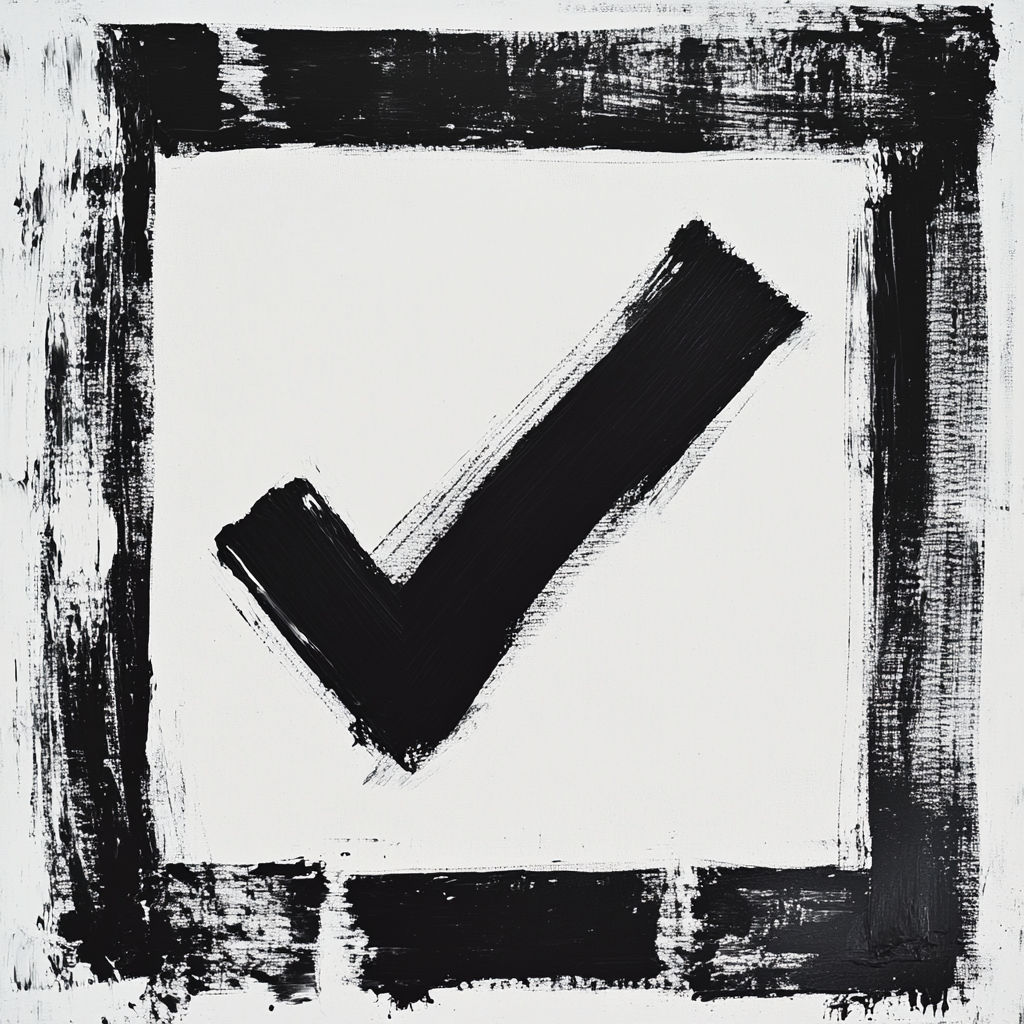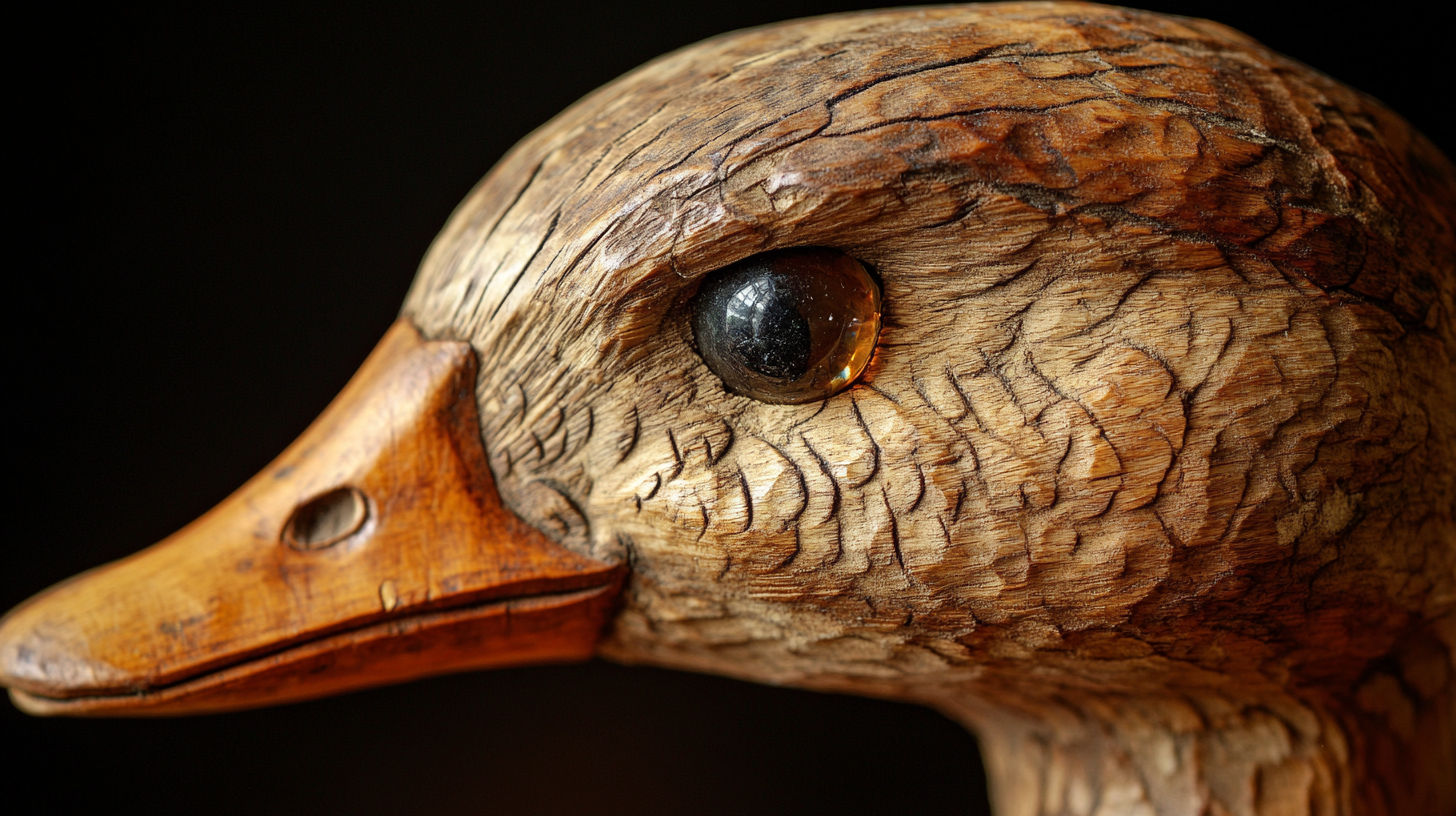
Introduction to Antique Duck Decoys
Antique duck decoys represent one of America’s most cherished folk art traditions. These functional sculptures began as hunting tools and have evolved into highly sought-after collectibles that can command thousands of dollars at auction. Understanding how to identify authentic hand-carved antique duck decoys is essential for collectors, appraisers, and enthusiasts alike.
Originating from Native American hunting traditions and refined by American carvers in the 19th and early 20th centuries, these decoys tell a fascinating story of American craftsmanship and hunting heritage. This comprehensive guide will help you navigate the world of antique duck decoys, from identifying authentic pieces to understanding their value in today’s market.
The History of Duck Decoys in North America
Duck decoys have been used for hunting waterfowl in North America since before European settlement. Native Americans crafted the earliest decoys from reeds and grasses, later incorporating wood as materials and techniques evolved. By the 19th century, distinctive regional carving styles had emerged across the United States.
The golden age of decoy carving spanned from approximately 1850 to 1950, when market hunting was at its peak. During this period, professional decoy makers developed signature styles that collectors now prize. The implementation of the Migratory Bird Treaty Act of 1918 and other conservation measures eventually curtailed market hunting, transforming decoys from everyday tools to collector’s items.
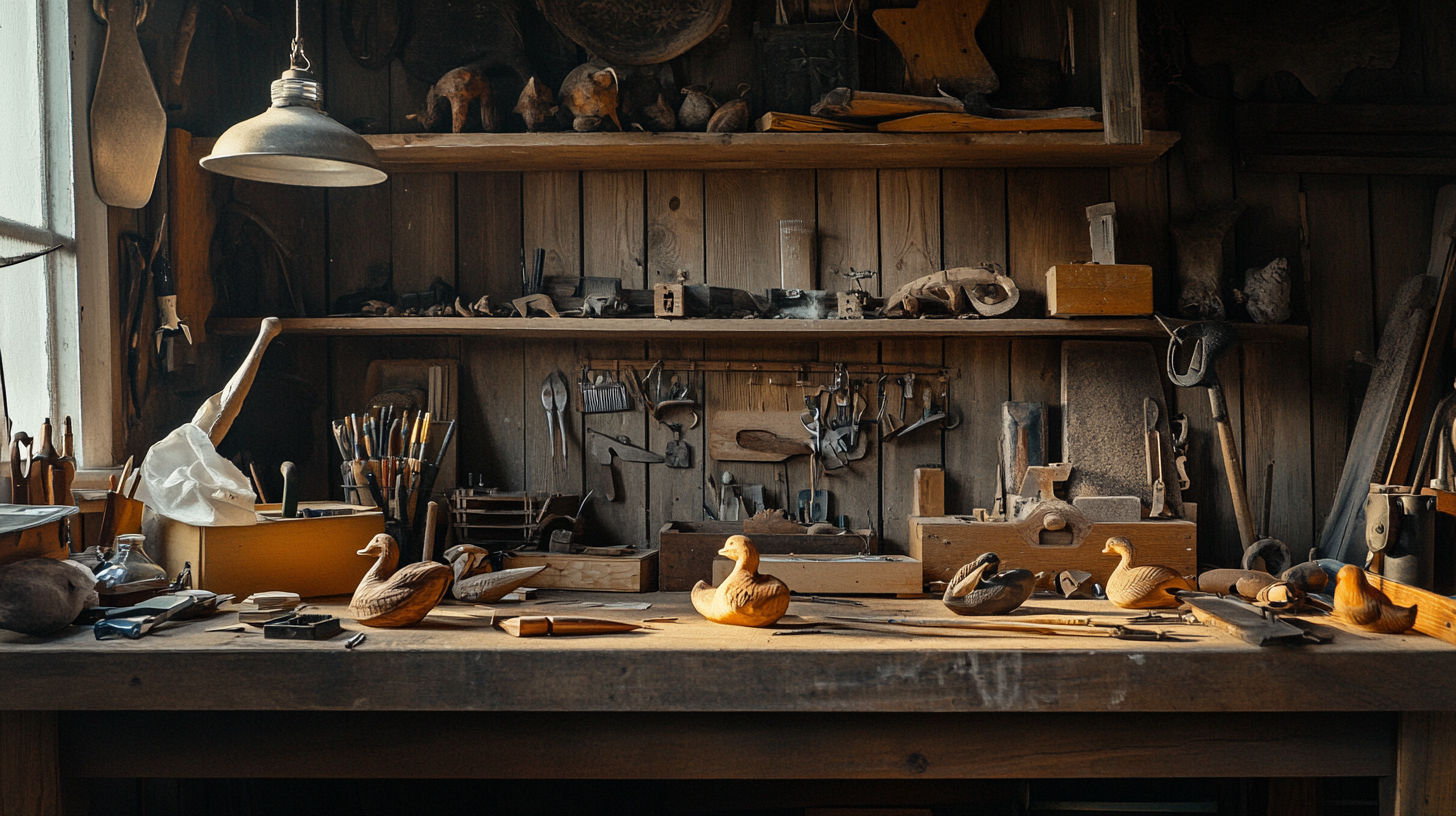
Evolution of Duck Decoy Carving in America
Native American Origins
Native Americans created the first decoys using reeds, grasses, and eventually wood to lure waterfowl within range for hunting.
Rise of Regional Styles
Distinct carving traditions emerged in areas like the Chesapeake Bay, New England, Long Island, and the Great Lakes.
Golden Age of Decoy Carving
Professional carvers developed signature styles and techniques. Market hunting peaked before conservation laws changed the landscape.
Collector's Era
Duck decoys transitioned from hunting tools to valued folk art collectibles, with some fetching hundreds of thousands at auction.
How to Identify Authentic Antique Duck Decoys
Identifying authentic antique duck decoys requires careful examination of several key elements. Here’s what to look for:
Age and Construction
Authentic antique decoys typically show signs of age that can’t be easily replicated. Look for natural aging in the wood, including:
- Natural wood shrinkage and checking (small cracks)
- Patina that develops over decades
- Original paint with natural wear patterns
- Construction methods appropriate to the period (hand-carved body, inserted head, etc.)
- Wood types common to antique decoys (cedar, pine, or cork)
Modern reproductions often have artificially distressed surfaces that appear too uniform or deliberate.
Craftsmanship and Carving Style
Regional Carving Styles
Understanding regional carving styles is crucial for proper identification:
New England Style: Typically sturdy with simple, clean lines and minimalist paint patterns. Maine and Massachusetts carvers often created decoys with slightly uplifted heads.
Chesapeake Bay Style: Known for sleek, graceful designs with elegant, flowing forms. Often feature rounded bottoms and high heads.
Long Island Style: Characterized by solid, chunky bodies with flat bottoms designed for stability in rougher waters.
Illinois River Style: Recognized for exceptional detail, realistic painting, and highly detailed feather carving.
Upper Midwest/Great Lakes Style: Often feature a pronounced breast and exaggerated features, with unique regional paint patterns.
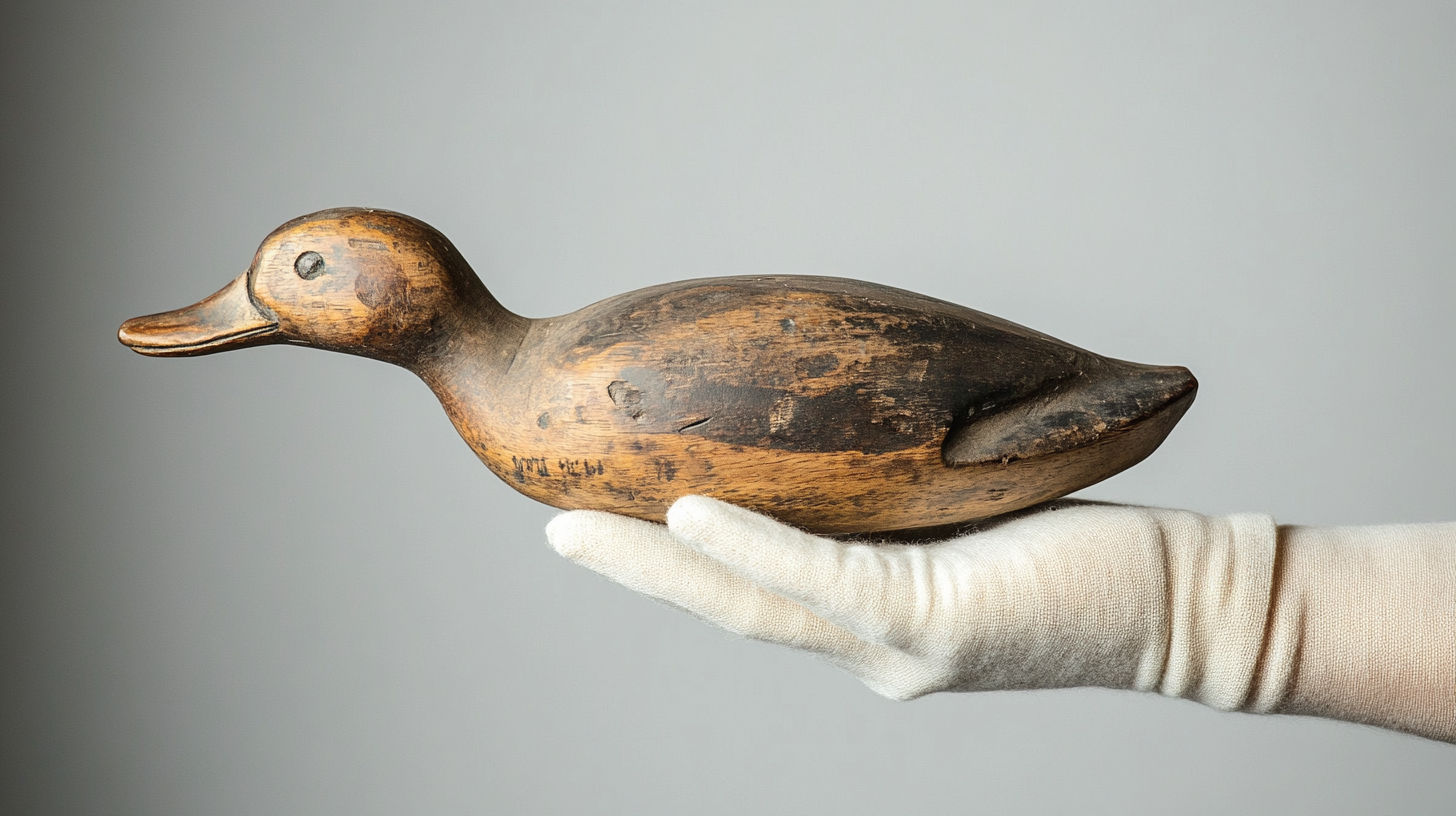
Paint and Surface Details
Original paint is crucial for value and authentication. Look for:
- Multiple layers of paint visible at wear points (indicating touch-ups during working use)
- Paint appropriate to the era (early 20th century decoys often have lead-based paint)
- Hand-painted details rather than stenciled patterns
- Natural wear patterns consistent with actual use in hunting
Authenticity Assessment Checklist
Famous Decoy Carvers and Their Signatures
Many of the most valuable duck decoys can be attributed to specific master carvers. Here are some of the most notable names to look for:
Elmer Crowell (1862-1952)
Often considered the finest decoy carver of all time, A. Elmer Crowell of East Harwich, Massachusetts created decoys known for their:
- Exceptional lifelike appearance with detailed head carving
- Distinctive carved “AC” or “Crowell” mark on the bottom
- Superior paint quality with detailed feather patterns
- Glass eyes set in carved eye grooves
- Slightly turned or twisted head positions
Ward Brothers (1877-1965 and 1895-1984)
Lemuel and Stephen Ward of Crisfield, Maryland created some of the finest Chesapeake Bay decoys:
- Often branded with “L.T. Ward & Bro.” or similar markings
- High, alert head positions
- Graceful lines with sleek bodies
- Detailed bill carving
- Distinctive Delaware River style painting
Mason Decoy Factory (1896-1924)
One of the first commercial producers of decoys, Mason decoys are known for:
- Factory stamps on the bottom (Detroit or Mason Decoy Factory)
- Machine-turned bodies with hand-finished details
- Several distinct grades (Premier, Challenge, Standard)
- Consistent form and construction methods
- High-quality original paint patterns
Remarkable Duck Decoy Auction Records
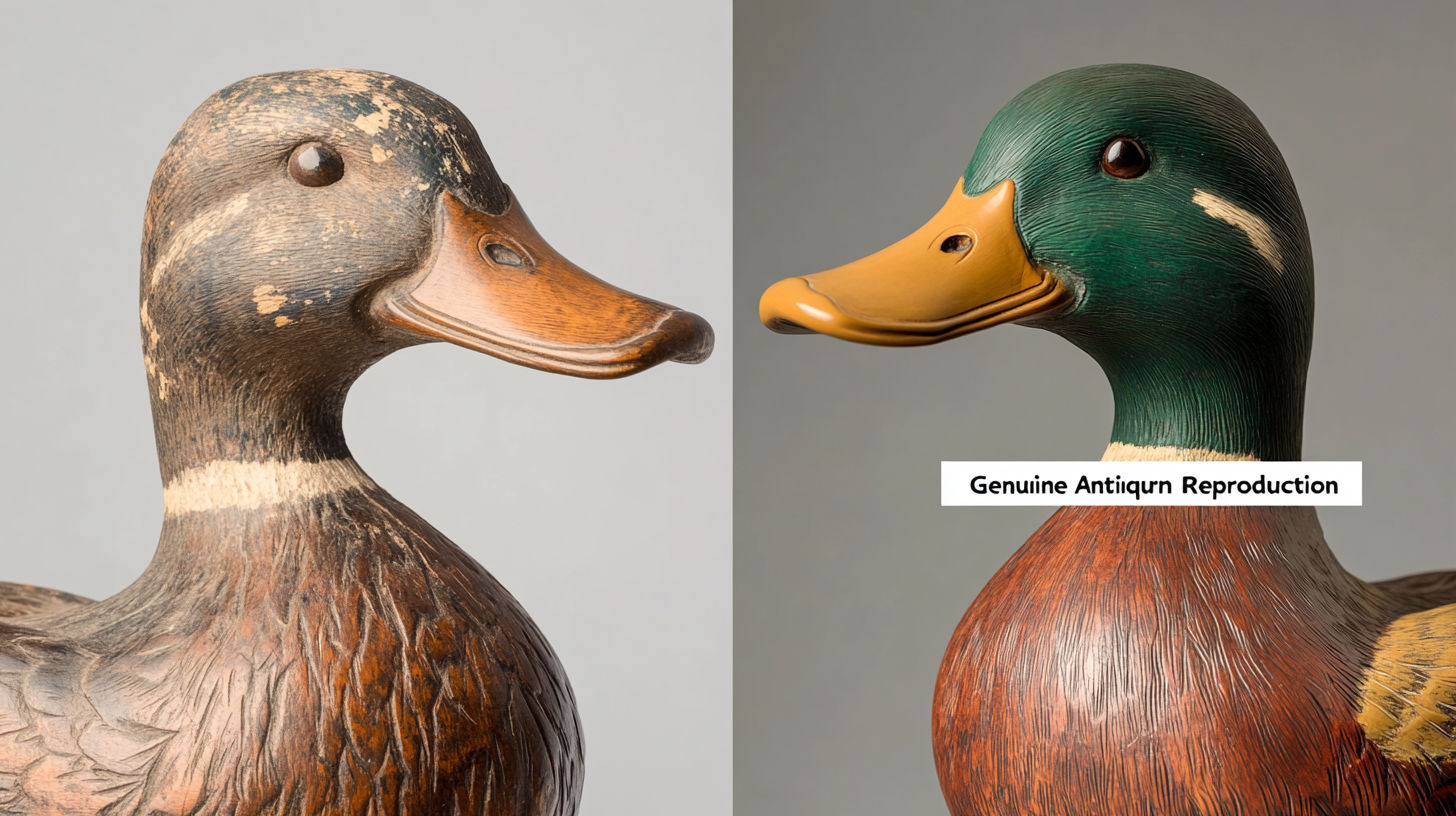
Notable Decoy Carvers and Value Ranges
| Category | Price Range | Notes |
|---|---|---|
| Elmer Crowell | $5,000 - $250,000+ | Massachusetts carver, considered among the finest |
| Ward Brothers | $2,500 - $100,000+ | Maryland carvers known for Chesapeake Bay style |
| Mason Decoy Factory | $500 - $20,000+ | Factory-produced with hand-finishing, various grades |
| Charles Perdew | $2,000 - $80,000+ | Illinois River carver with exceptional painting |
| Ira Hudson | $1,500 - $30,000+ | Virginia carver with distinctive style |
| Nathan Cobb Jr. | $3,000 - $120,000+ | Virginia/North Carolina carver, distinctive style |
| Lee Dudley | $2,000 - $75,000+ | Virginia carver known for canvasbacks |
| Unnamed/Working Decoys | $75 - $1,500 | Authentic vintage pieces without maker attribution |
Note: Price ranges are approximate and can vary based on condition, rarity, and market demand.
Other Notable Carvers
Other important decoy carvers to be familiar with include:
- George Boyd (Maine)
- Harry V. Shourds (New Jersey)
- John Blair Sr. (Pennsylvania)
- Ira Hudson (Virginia)
- Charles Perdew (Illinois)
- Nathan Cobb Jr. (Virginia/North Carolina)
- Lee Dudley (Virginia)
- Charles Schoenheider Sr. (Illinois)
- Robert Elliston (Illinois)
- Charles Bergman (New York)
Key Factors That Determine Decoy Value
The value of antique duck decoys depends on multiple factors. Here are the most important considerations:
Maker and Attribution
Decoys by known, respected carvers command significantly higher prices. A decoy with:
- A clear maker’s mark or signature
- Documented provenance
- Distinctive characteristics of a famous carver
- Association with a notable hunting club or collection
will generally be more valuable than an anonymous piece.
Form and Artistic Merit
Beyond who made it, the artistic quality matters greatly:
- Skill in capturing the essence of the species
- Balance and proportion
- Sense of movement or animation
- Refinement of carving and detail work
- Overall aesthetic appeal
Condition and Original Paint
Original paint in good condition can multiply a decoy’s value:
- Original paint with natural wear (not repainted)
- Good structural condition (minimal damage)
- Evidence of use without excessive damage
- Natural patina rather than artificial aging
Rarity and Species
Some duck species are rarer in decoy form:
- Pintails, wood ducks, and canvasbacks often command premiums
- Rare poses or configurations (sleeping, preening, etc.)
- Regional variations that weren’t commonly produced
- Miniature or oversized examples
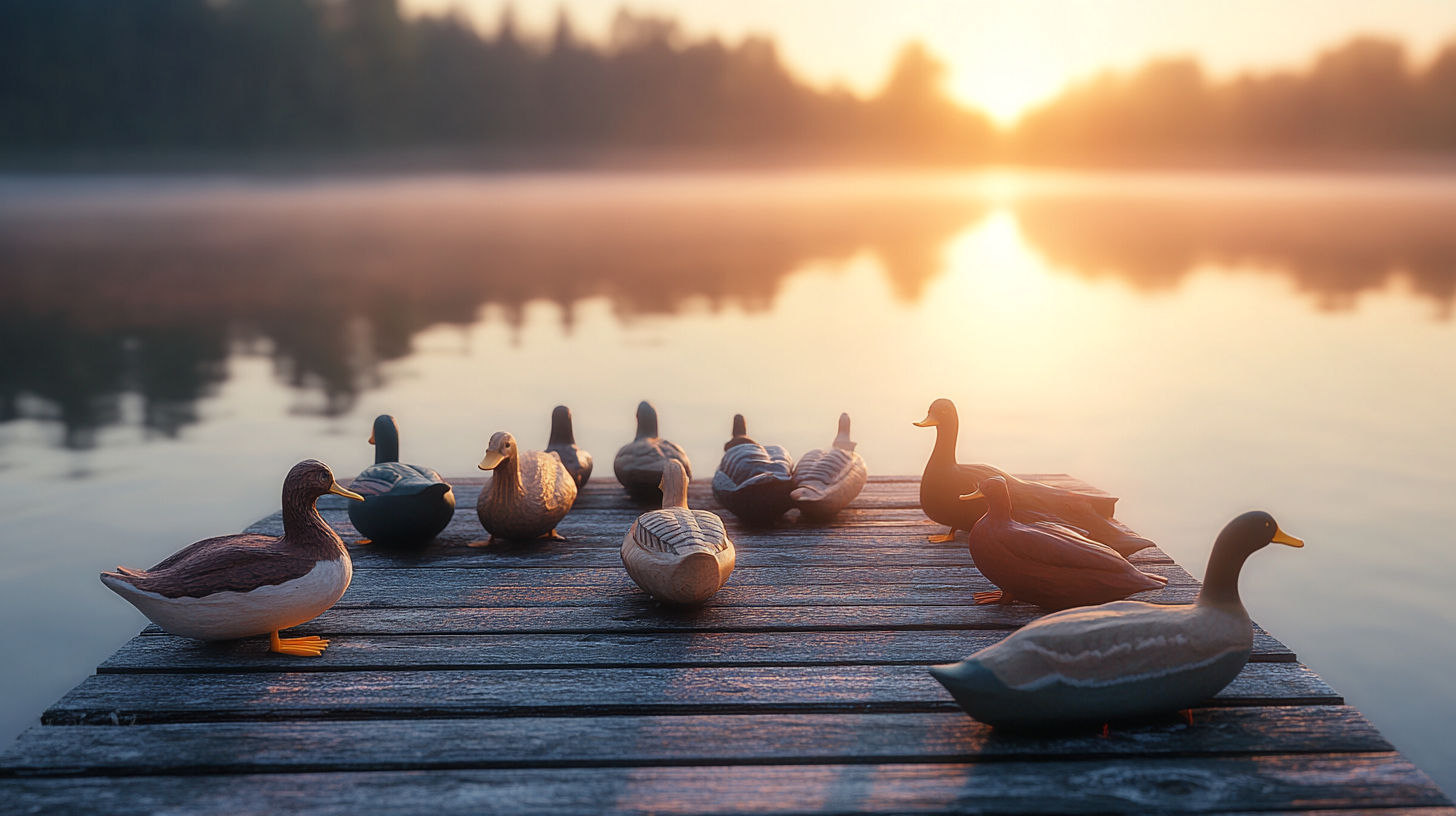
Historical Significance
Decoys with documented history can be especially valuable:
- Known use in famous hunting clubs
- Association with historical figures
- Documented in important collections or publications
- Featured in museum exhibitions
Recent Antique Duck Decoy Auction Sales
| Item | Price | Date | Auction House |
|---|---|---|---|
| Elmer Crowell Preening Pintail Drake | $1,127,500 | January 2007 | Christie's |
| Ward Brothers Canvasback Drake | $231,000 | July 2021 | Guyette & Deeter |
| Nathan Cobb Jr. Canada Goose | $186,500 | April 2019 | Copley Fine Art Auctions |
| Charles Perdew Mallard Pair | $126,000 | November 2020 | Sotheby's |
| Mason Premier Grade Canvasback | $72,000 | February 2022 | Guyette & Deeter |
Note: Auction results represent past sales and may not reflect current market values. Always consult with a professional appraiser for accurate valuations.
Tips for Spotting Reproductions and Fakes
As the value of antique decoys has increased, so has the market for reproductions and fakes. Here’s how to avoid being deceived:
Common Red Flags
Watch for these warning signs that may indicate a reproduction:
- Wood that appears too fresh or lacks appropriate aging
- Perfectly symmetrical designs (antique decoys were hand-carved and typically show slight asymmetry)
- Machine-made details on decoys claiming to predate power tools
- Artificially distressed or “antiqued” surfaces
- Paint that appears too fresh or shows artificial cracking
- Modern fasteners or materials (phillips-head screws, modern glues, etc.)
- Weight that feels inconsistent with aged wood
- Perfectly matched pairs (rare in authentic antiques)
Authentication Methods
When evaluating a potentially valuable decoy:
- Examine under UV light: Original paint and modern paint often fluoresce differently
- Check the weight: Old wood tends to be lighter than new wood
- Look for tool marks: Hand-carved decoys show characteristic tool patterns
- Research the maker’s style: Learn the distinctive characteristics of major carvers
- Consult multiple references: Compare against museum examples and auction catalogs
- Seek expert opinions: When in doubt, consult with experienced appraisers or auction specialists
Caring for Your Antique Duck Decoy Collection
Once you’ve acquired authentic antique decoys, proper care is essential to preserve their value:
Display Considerations
- Avoid direct sunlight: UV rays can fade original paint and damage wood
- Control humidity: Maintain 40-60% relative humidity to prevent cracking or warping
- Dust carefully: Use soft brushes rather than cloths that might catch on rough surfaces
- Support properly: Display stands should provide even support without stress points
- Rotate displayed items: If you have a large collection, rotate items to distribute exposure
Handling Guidelines
- Use clean hands: Always handle with clean, dry hands or cotton gloves
- Support the body: Never pick up a decoy by the head or neck
- Move carefully: Transport in padded containers to prevent damage
- Document your collection: Maintain photographs and records of each piece
- Consider insurance: Valuable decoys should be specifically listed on insurance policies
Conservation vs. Restoration
The debate between conservation and restoration is important:
- Conservation aims to stabilize and preserve the current condition without adding new material
- Restoration attempts to return the decoy to a previous state, often adding new paint or materials
Most experts recommend conservation over restoration for valuable decoys, as original condition, even with wear, is typically preferred by serious collectors.
Where to Buy and Sell Antique Duck Decoys
Whether you’re looking to buy or sell antique decoys, choosing the right venue is important:
Auction Houses
Specialized auction houses offer the most exposure for high-value decoys:
- Guyette & Deeter: The leading decoy auction house with multiple sales per year
- Copley Fine Art Auctions: Specializes in sporting art and decoys
- Christie’s and Sotheby’s: For exceptional examples within their Americana sales
- Regional auction houses: Often handle more moderate decoys from their areas
Specialty Dealers
Established dealers can provide expertise and often stand behind their sales:
- Attend decoy shows to meet reputable dealers
- Look for dealers with published articles or books on decoys
- Ask for references and check their reputation with collector organizations
- Expect proper documentation for significant pieces
Online Marketplaces
Online sales have advantages and risks:
- eBay: Wide selection but variable authenticity
- 1stDibs: Higher-end pieces with dealer backing
- Ruby Lane: Vetted antique dealers with collectibles focus
- Specialized collecting forums: Often have classified sections
Duck Decoy Shows and Events
Shows provide opportunities to learn while buying and selling:
- Midwest Decoy Collectors Association Show: Major annual event
- East Coast Decoy Collectors Association Events: Regional focus
- Local wildlife art festivals: Often include decoy competitions and sales
- Museum exhibitions: Educational opportunities with dealer presence
Essential Duck Decoy Collecting Resources
RJG Antiques: Beginner's Guide to Decoy Regions
Comprehensive guide to regional decoy styles and identification features with valuable maker information.
North American Decoy Collectors Association
Professional organization dedicated to decoy collecting with resources for authenticating and valuing decoys.
Invaluable: Duck Decoy Price Guide
Detailed price guide covering factors that determine value and recent auction results.
Warman's Duck Decoys Identification Guide
Essential reference book for identifying decoys and spotting forgeries.
Collectors Weekly: Vintage and Antique Duck Decoys
Articles and resources about collecting vintage and antique duck decoys from expert collectors.
Guyette & Deeter Auctions
The premier auction house for duck decoys, with auction records and authentication services.
Ducks Unlimited: Decoy Collecting Tips
Practical advice for finding affordable hand-carved decoys and building a collection.
Ward Museum of Wildfowl Art
Premier museum dedicated to wildfowl art with extensive decoy collections and educational resources.
Common Questions About Antique Duck Decoys
How can I identify a vintage duck decoy?
To identify a vintage duck decoy, examine several key features:
1. Look for signs of natural aging in the wood, including patina, checking (small cracks), and wear consistent with use
2. Check for hand-carving marks and slight asymmetry typical of handmade items
3. Examine the paint for original layers, with natural wear patterns
4. Search for maker's marks or signatures on the bottom
5. Note the regional style characteristics (New England, Chesapeake Bay, Illinois River, etc.)
6. Consider the construction methods, including how the head is attached
7. Research similar examples in reference books and museum collections
If the decoy lacks a maker's mark, identifying the exact carver can be challenging, but regional styles and time periods can often be determined by an expert.
How much is an old duck decoy worth?
The value of an old duck decoy varies dramatically based on several factors:
- **Maker**: Decoys by famous carvers like Elmer Crowell can fetch $5,000 to over $1 million, while unmarked working decoys might sell for $75-$1,500
- **Condition**: Original paint in good condition can multiply value significantly
- **Rarity**: Uncommon species or poses command premiums
- **Provenance**: Documented history increases value
- **Artistic merit**: Exceptional examples with superior form and detail bring higher prices
For accurate valuation, consult a specialized appraiser or auction house that deals with sporting collectibles. Keep in mind that even modest-looking decoys can sometimes be valuable if they have the right maker or characteristics.
What are the names of the famous duck decoy carvers?
The most renowned duck decoy carvers include:
- **A. Elmer Crowell** (Massachusetts) - considered the master, known for exceptional detail
- **Ward Brothers** (Lemuel and Stephen, Maryland) - masters of the Chesapeake Bay style
- **Mason Decoy Factory** (Detroit) - produced high-quality commercial decoys in different grades
- **Charles Perdew** (Illinois) - known for exceptional Illinois River style decoys
- **Ira Hudson** (Virginia) - created distinctive Chesapeake Bay decoys
- **Nathan Cobb Jr.** (Virginia/North Carolina) - known for bold, powerful carvings
- **Lee Dudley** (Virginia) - renowned for his canvasbacks
- **Harry V. Shourds** (New Jersey) - master of Delaware River style
- **George Boyd** (Maine) - created distinctive New England style decoys
- **John Blair Sr.** (Pennsylvania) - known for his Delaware River style
Each of these carvers developed distinctive styles that experienced collectors can often identify on sight.
What are vintage duck decoys made of?
Vintage duck decoys were primarily made from these materials:
- **Wood**: The most common material, with white cedar being preferred in Eastern regions for its rot resistance and workability. Pine, cypress, and other softwoods were also used depending on regional availability.
- **Cork**: Some decoys, particularly in the late 19th and early 20th centuries, were made with cork bodies for lightness and buoyancy, often with wooden heads.
- **Canvas/Fabric**: Canvas-covered decoys (often over wooden or wire frames) were lighter and less expensive alternatives.
Additionally, authentic vintage decoys typically featured:
- Glass or tack eyes (earlier examples might have painted eyes)
- Lead or metal keels for stability
- Oil-based or lead-based paints
- Natural materials for detailing (some used actual feathers for early examples)
Modern reproductions often use different woods, synthetic materials, or modern paints that can help differentiate them from genuine antiques.
How can I tell if a duck decoy is valuable?
To determine if a duck decoy might be valuable, look for these indicators:
1. **Maker identification**: Signed, stamped, or attributable to a known carver
2. **Age**: Genuine antique decoys (generally pre-1950) tend to be more valuable
3. **Original paint**: Decoys with original, intact paint command higher prices
4. **Condition**: Good structural condition with minimal damage
5. **Artistic quality**: Superior form, animation, and craftsmanship
6. **Rarity**: Unusual species, poses, or regional variants
7. **Provenance**: Documented history or origin from notable collections
The most valuable decoys combine several of these factors - for example, a rare species carved by a renowned maker with original paint and documented provenance could be extremely valuable.
For a definitive assessment, consult with a specialized auction house like Guyette & Deeter or an experienced appraiser who specializes in sporting collectibles and decoys.
Where can I sell antique duck decoys?
The best venues for selling antique duck decoys depend on the value and rarity of your pieces:
**For high-value or rare decoys:**
- **Specialized auction houses**: Guyette & Deeter, Copley Fine Art Auctions
- **Major auction houses**: Christie's, Sotheby's, or Bonhams for exceptional examples
- **Specialty dealers**: Established decoy and sporting art dealers
**For mid-range decoys:**
- **Regional auction houses** with sporting collectibles expertise
- **Decoy shows and collecting events**
- **Consignment to specialty shops**
**For more common examples:**
- **Online marketplaces**: eBay, 1stDibs, Ruby Lane
- **Antique malls or shops**
- **Collector forums and classified sections**
Before selling, consider having valuable pieces authenticated and appraised. For the best results with significant decoys, auction houses that specialize in sporting collectibles typically achieve the highest prices and reach the most serious collectors.
Conclusion: Building Your Knowledge and Collection
Antique hand-carved duck decoys represent a uniquely American art form that bridges functional craft and fine art. Whether you’re a beginning collector or a seasoned enthusiast, developing your eye for authentic decoys takes time and study.
The most successful collectors combine:
- Hands-on examination of museum-quality examples
- Study of reference materials and auction catalogs
- Relationships with reputable dealers and fellow collectors
- Attention to regional styles and maker characteristics
By understanding the historical context, regional styles, and distinctive characteristics of master carvers, you’ll be better equipped to identify authentic pieces and make informed decisions about value.
Remember that condition and original paint significantly impact value, but a decoy from a famous maker may still command a premium even with condition issues. As with any collecting area, knowledge is your most valuable tool in navigating the antique duck decoy market.
Consider joining a collector’s organization like the North American Decoy Collectors Association or attending specialized shows to further your education and connect with the collecting community. With patience and research, you can develop the expertise to identify and appreciate these fascinating pieces of American folk art.
